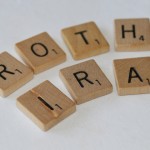 Whether Roth or not, Christine Benz covers all the IRA bases in her Morningstar article “The 5 Mistakes Can Trip up Even Seasoned Investors.” In Part 3, taken from her article, she covers:
Whether Roth or not, Christine Benz covers all the IRA bases in her Morningstar article “The 5 Mistakes Can Trip up Even Seasoned Investors.” In Part 3, taken from her article, she covers:
“Mistake 3: Paying Too Much Attention to Tax Management. Part of the point of investing in an IRA is that you get tax-deferred compounding- or tax-free compounding, in the case of Roth assets. And savvy investors have
been schooled on the notion that in order to take maximum advantage of the free ride on taxes, IRAs should be used to shelter those investments that have high year-to-year tax costs, such as bonds and REITs. That’s true, but skirting taxes shouldn’t be the main consideration when deciding what types of assets to put inside of an IRA. Instead, your time horizon and your overall asset allocation should be the primary driver of what types of assets you hold. Only after you’ve determined the optimal mix of investments should you turn your attention to what goes where.
“If you’re in your 20s and 30s, for example, there’s no need to go out of your way to add bonds, REIT5, or anything else that kicks off a lot of income to your IRA- – unless you wanted those assets in your portfolio anyway.
“It’s also worth bearing in mind that the ideal holdings for a traditional IRA and a Roth IRA may well be different. Your time horizon for each of these asset pools, as well as the tax treatment of each, can help you decide which security types to place where. Because Roth assets have the biggest tax advantages- -they give you both tax-free compounding and tax-free withdrawals–the name of the game is to hang on to them as long as possible. That means a Roth IRA is the ideal receptacle for the longest-term assets in your portfolio, usually stocks, even though stocks can be quite tax-efficient on a year-to-year basis. Stocks are likely to appreciate the most during your holding period, and holding them inside your Roth will allow you to circumvent taxes on all that appreciation.”
